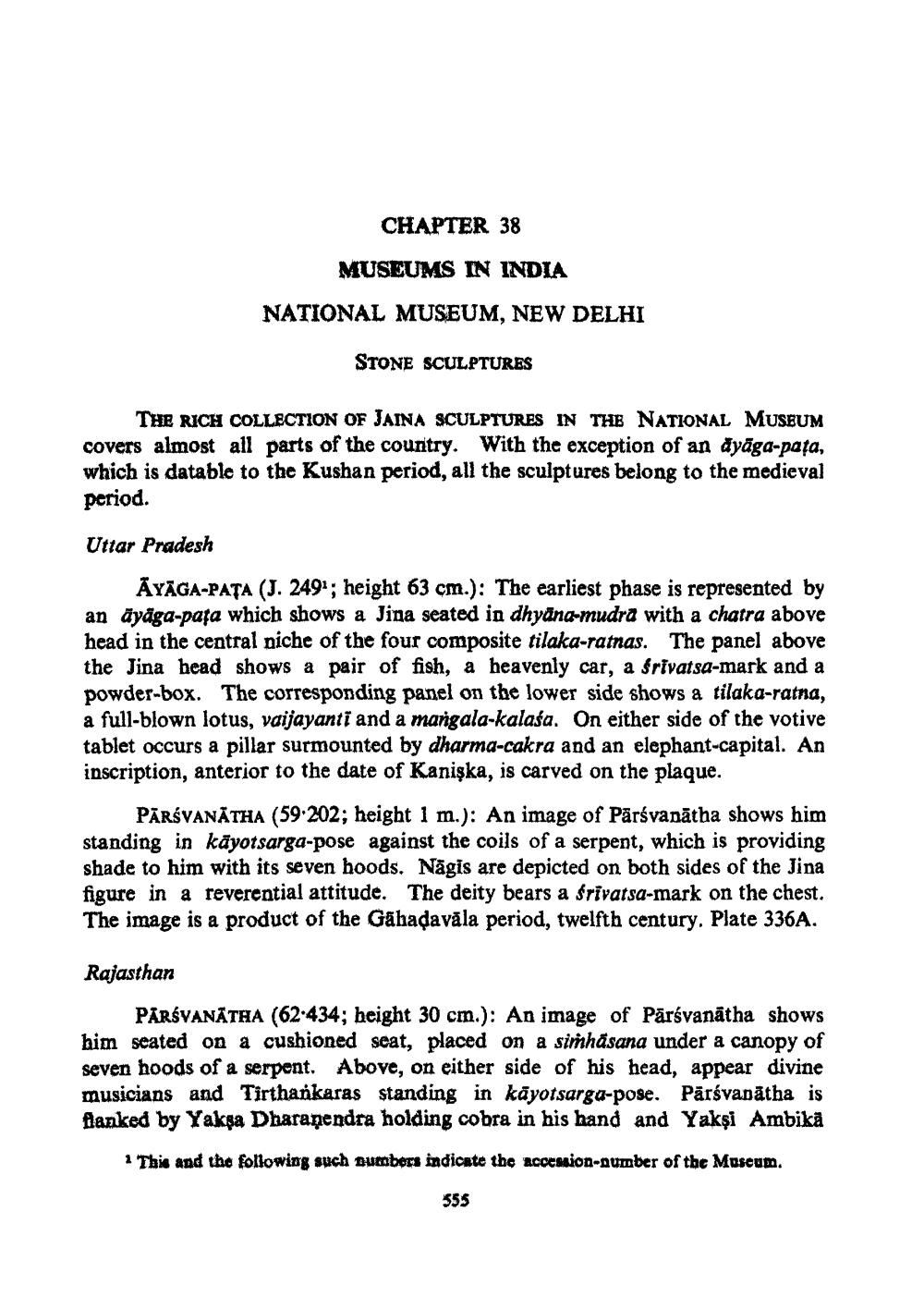________________
CHAPTER 38
MUSEUMS IN INDIA NATIONAL MUSEUM, NEW DELHI
STONE SCULPTURES
THE RICH COLLECTION OF JAINA SCULPTURES IN THE NATIONAL MUSEUM covers almost all parts of the country. With the exception of an dyāga-pata, which is datable to the Kushan period, all the sculptures belong to the medieval period.
Uttar Pradesh
ĀYAGA-PATA (J. 2491; height 63 cm.): The earliest phase is represented by an āyāga-pata which shows a Jina seated in dhyana-mudra with a chatra above head in the central niche of the four composite tilaka-ratnas. The panel above the Jina head shows a pair of fish, a heavenly car, a frivatsa-mark and a powder-box. The corresponding panel on the lower side shows a tilaka-ratna, a full-blown lotus, vaijayanti and a mangala-kalasa. On either side of the votive tablet occurs a pillar surmounted by dharma-cakra and an elephant-capital. An inscription, anterior to the date of Kaniska, is carved on the plaque.
PĀRSVANATHA (59 202; height 1 m.): An image of Pārsvanātha shows him standing in kāyotsarga-pose against the coils of a serpent, which is providing shade to him with its seven hoods. Nāgis are depicted on both sides of the Jina
in a reverential attitude. The deity bears a srivatsa-mark on the chest. The image is a product of the Gahadavāla period, twelfth century. Plate 336A.
Rajasthan
PĀRSVANATHA (62.434; height 30 cm.): An image of Pārsvanātha shows him seated on a cushioned seat, placed on a simhasana under a canopy of seven hoods of a serpent. Above, on either side of his head, appear divine musicians and Tirthankaras standing in kāyotsarga-pose. Pārsvanatha is flanked by Yaksa Dharanendra holding cobra in his hand and Yakşi Ambika
1 This and the following such numbers indicate the accession-number of the Museum
555




